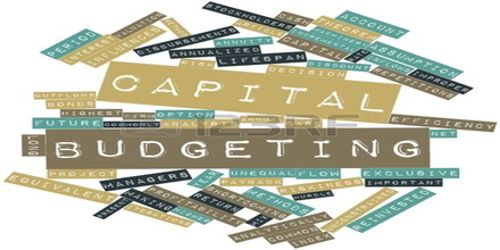A project is a temporary endeavor undertaken to create a unique product, service, or result. The temporary nature of protects indicates that a project has a definite beginning and end. Capital budgeting is the process in which a business determines whether projects such as building a new plant or investing in a long-term venture are worth pursuing. Oftentimes, a prospective project’s lifetime cash inflows and outflows are assessed in order to determine whether the returns generated to meet a sufficient target benchmark. Capital budgeting has the following five broad phases:
- Market analysis,
- Technical analysis,
- Financial analysis,
- Economic analysis,
- Ecological analysis.
These can be explained as follow;
- Market Analysis:
A market Analysis studied the attractiveness and the dynamics of a special market within a special industry. It is part of the industry analysis and thus in turn of the global environmental analysis. It is concerned with two questions –
- What would be the aggregate demand of the proposed product/service in the future?
- What would be the market share of the project under appraisal?
To answer the above questions, the market analyst requires a wide variety of information and appropriate method.
- Technical analysis:
The technical analysis of a project idea includes designing the various processes, installing equipment, specifying material, and prototype testing, the project manager has to be careful in finalizing the technical aspects of the project as the decision is irreversible and the investments involved may be high. The Project manager has to select the technology required in consultation with technical experts and consultants.
- Financial analysis:
Financial analysis is the process of evaluating businesses, Projects, budgets and other finance-related entities to determine their suitability for investment. Typically, financial analysis is used to analyze whether an entity is stable, solvent, liquid, or profitable enough to be invested in. When looking at a specific company, the financial analyst will often focus on the income statement, balance sheet, and cash flow statement. In addition, one key area of financial analysis involves extrapolating the company’s past performance into an estimate of the company’s future performance.
- Economic analysis:
Economic analysis is a process for evaluating the merits of a particular project or course of action in a systematic and rigorous way. Social cost-benefit analysis refers to cases where the project has a broad impact on society and, as such, is usually carried out by the government. While the cost and benefits may relate to goods and services that have a simple and transparent measure in a convenient unit (e.g. their price in money), this is frequently not so, especially in the social case. It should, therefore, be emphasized that the costs and benefits considered by (social) ‘cost-benefit’ analysis are not limited to easily quantifiable changes in material goods. but should be construed in their widest sense, measuring changes in individual ‘utility’ and total ‘social welfare’ (though economists frequently express those measures in money-metric terms). In its essence cost-beneath analysis is extremely, indeed trivially, simple; evaluate costs and benefits B for the project under consideration and proceed with it if, and only if, benefits match or exceed the costs.
- Ecological analysis:
Environmental concern has assumed a great deal of significance and rightly so. An ecological analysis should be done particularly for major projects which have the significant ecological implication.














